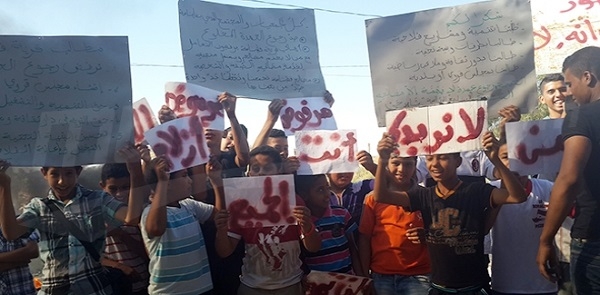No one can deny the big sacrifices granted by the southern regions during the period that led to the fall of Ben Ali. Douz’s demonstrations will remain, in this regard, one of the bloodiest that the governorate of Kébili has ever known
They knew, among other things, the assassination (by a sniper) of the academic Bettahar, a computer teacher at the University of Technology in Compiègne, in Oise (France).
No one can therefore question the courage, the valor and patriotism of the population of Kébili, governorate from which the ex-provisional president, Moncef Marzouki, from the biggest and most influential tribes of the South, the “M’razigs”.
For some time now, past the periods of transitions ranging from the Mohamed Ghannouchi government to the Troika, passing through that of Caïd Essebsi, Kébili and its surroundings have almost become the only home of violent political disputes throughout the country.
Douz, stronghold of the anti-Essebsi movement
After the incidents of El Faouar (a locality of Kébili), the past week, with the assaults of the police, journalists and the fire of safety premises, it is the region of Fatnassa (another locality of Kébili) which currently lives demonstrations which, hopefully, will not turn to the scrap.
In Fatnassa (Souk Lahad delegation), the population has today called for the development of the region and employment, as well as the dismissal of the OMDA which occupies this position since the reign of the old regime.
The delegation of Souk Lahad, is also a good part in these disorders, Salafist Bastion, it was, in this regard, alongside Jomna and Douz (still localities of Kebili), one of the most violent areas during the anti-Caïd Essebsi and Pro-Marzouki riots, between the two rounds of the presidential and after the proclamation of Essebsi December 23, 2014.
Demonstrators, mainly children
And that’s not all, on April 3, 2015, altercations occurred between protesters and the police intervened to remove a sit-in organized by a group of young people from the locality of Garaâ in Ksar Ghilane in the delegation of Douz Nord (decidedly!). Calm has returned difficult after more than two days of violence.
A little further, on September 11, 2014 clashes opposed police officers and protesting demonstrators against the arrest of an Islamist activist in the city of Douz (yes!) Protests that turned to clashes spread over at least three days.
Things are not limited to it, there have been many other scuffles in Douz, the observation which cannot escape anyone by seeing the images of the demonstrations and the photos published in the web, is that unlike all the other regions of the country, the bulk of the demonstrators and the thugs are children, barely adolescents.
Bad tongues will say that these children are manipulated by a political current acquired by the cause of Moncef Marzouki including Kébili, and precisely Douz, is the fief.
There, we think that if there are so many children, it is that awakening to politics, Kébili and Douz, has childhood. This is the most logical explanation, right?








